24 Benefits Of Red Wine, How To Drink It, Uses, & Side Effects
Your hair, skin, or health will love you for indulging in a glass of red at the end of the day.

Image: Midjourney/ StyleCraze Design Team
Red wine is loved by many as this fermented drink has many beneficial antioxidants. Red wine benefits, when taken in moderation, are numerous. For example, recent research stated that red wine could promote cardiovascular health and even cut down cancer risk if taken in moderate amounts.
From the article below, know more about red wine and its benefits. Scroll down.

 Know Your Ingredient: Red Wine
Know Your Ingredient: Red WineWhat Is It?
It is an alcoholic beverage made from fermented red grapes, yeast, and preservatives.
What are Its Benefits?
It may reduce the risk of heart disease, improves brain function, and promotes longevity. It may also lower cholesterol levels, regulate blood sugar, and protect against certain types of cancer.
Who Can Use It?
It can be consumed by adults of legal drinking age, who do not have any underlying health conditions or consume medications.
How Often?
It is recommended to consume one glass of red wine a day for women.
Caution
Excessive alcohol consumption may cause liver damage, increased risk of certain cancers, and addiction. Pregnant women and those with certain health conditions should avoid it.
In This Article
What Is Red Wine?
This is a type of wine made from black grape varieties. But the color of the wine may differ – ranging from intense violet (young wines) to brick red (mature wines) and brown (older wines).
How the wine is made is an interesting story – right from being handpicked to bottled. We will discuss the process in detail in a later section in this post. But, simply put, red wine is made by crushing and fermenting dark colored grapes (the whole fruit).
The alcohol content of red wine usually ranges from 12% to 15%.
Organic wine is another type of wine that has a subtle difference. This wine is produced from grapes that are grown according to the principles of organic farming – which prohibits the use of chemicals and other artificial fertilizers.
One glass of red wine has about 125 calories. It contains about 3.8 grams of carbohydrates and no cholesterol.
But hey, did you know there are different types of red wine?
Key Takeaways
- Resveratrol repairs the blood-brain barrier that improves cognitive functions, thus it good for Alzheimer’s disease.
- Red wine has antioxidants that boost good cholesterol levels and prevents heart diseases and cholesterol build-up.
- Resveratrol restores the skin’s natural glow by reducing oxidative stress and protecting the skin from sun damage.
- The excess consumption of red wine could lead to asthma, insomnia, gout, and high blood pressure.
What Are The Types Of Red Wine?
There are different types of red wine, each with its own unique element. Some of the most popular ones are:
– Syrah, which is also called Shiraz. This variety produces spicy and hearty red wine. The variety is usually used to produce average wines. But some of the wines coming from this variety have intense flavors and great longevity.
– Merlot, whose softness has made this variety an ‘introducing wine’ to new wine drinkers.
– Cabernet, which is one of the world’s best varieties. This wine type usually undergoes oak treatment.
– Malbec, having originated from the district of Bordeaux in France, this variety is often blended with cabernet and merlot.
– Pinot noir, which is one of the noblest red wine grapes. This variety is difficult to grow.
– Zinfandel, the world’s most versatile wine grape variety.
– Sangiovese, which can be a good choice for Italian style cuisines.
– Barbera, which has similar attributes as Merlot, though not as popular.
 Did You Know?
Did You Know?Not just the varieties, but red wine has a rich history too.
What Is The History Of Red Wine?
Red wine was first produced (using the fermentation process) in Georgia and Iran way back around 6000 BC.
And wine was first mentioned as a man-made medicine around 2200 BC, in ancient Egyptian Papyri and Sumerian tablets.
Hippocrates, widely known as the father of Western medicine, promoted wine as a part of a healthy diet. According to him, wine was also good for disinfecting wounds, easing the pain during childbirth, and treating symptoms of diarrhea and lethargy. Even during the Middle Ages, Catholic monks were known to frequently use wine for a variety of medical treatments. And during the 1892 cholera epidemic that shook Germany, wine was used to sterilize water.
The early 20th century saw the rise of the Temperance movement that discouraged wine consumption, linking it to alcoholism.
And over the recent years, numerous studies have been conducted that threw a positive light on wine, especially the red variety. Research has shown that moderate wine consumption has beneficial effects on heart health and diabetes management. It might also help fight obesity and diseases of the nervous system. You will see a ton of this research in this post. Just keep reading.
Before we proceed any further, you need to know about the French paradox. This is the observation that the French have very low rates of heart disease, despite consuming large amounts of cholesterol and saturated fat (1). Certain experts believe that the regular consumption of red wine by the French could be a reason.
What is also important to consider is that studies have shown that saturated fat and cholesterol are not always so bad. When consumed in moderate amounts, they don’t cause any harm (2), (3).
Well, this does show red wine as an elixir for vitality and good health. We don’t know that yet, but what ingredients in red wine could make it so beneficial?
What Ingredients In Red Wine Make It So Beneficial?

Red wine is made from grapes, and grapes are rich in several antioxidants. Some of these include catechins, resveratrol, epicatechin, and proanthocyanidins (4).
Resveratrol, the antioxidant coming from grape skins, has anti-aging and heart-healthy benefits.
Flavonoids, especially the anthocyanins, that render the wine a rich red color, can have beneficial effects for overall health and can reduce heart disease risk (5). These antioxidants also help combat free radical damage. Wines contain sugar too – which is something you need to consider.
- Dry wine – 4 grams of sugar per liter
- Medium dry wine – 4 to 12 grams of sugar per liter (0.5 to 2 grams per glass)
- Sweet wine – 45 grams of sugar per liter (6 grams per glass)
Red wine could be available in all these types, and if possible, try to go for the dry variety.
And coming to the big question –
Is Red Wine Good For You?
That’s the entire deal, isn’t it? Oh yes, overconsumption is hazardous. It can wreck your life and make you wonder why you even had that first sip.
But red wine, in moderation, has benefits.
Benefits. Hard to associate the term with wine, isn’t it? Well – not anymore. Consuming red wine (in moderation, remember) can cut the risk of dementia (6). It can even prevent liver disease and offer protection against cancer (prostate cancer, especially) (7), (8).
There are so many other benefits. Really.
And we will look at all of them. But before that, if you are against wine consumption (for any reason) but still want the benefits this wine offers, you have good news.
A red wine pill. Popping a pill can help you receive the benefits of resveratrol without having to uncork a single bottle. Taking a red wine pill can also help you avoid all the empty calories and sugars that come with red wine.
Before we move to the benefits of red wine for female and male health, we want to make one thing very clear.
| DISCLAIMER Neither the American Heart Association nor the National Heart, Lung, and Blood Institute recommends you drink alcohol just to prevent disease. Alcohol can be addictive and can lead to serious health problems or even aggravate some. |
Okay? Okay.
What Are The Benefits Of Red Wine For Health?
Check out some of the best health benefits of red wine.
1. Boosts Heart Health
The antioxidants in red wine can increase the levels of good cholesterol (high-density lipoprotein, or HDL). This prevents cholesterol build-up, preventing heart disease. The polyphenols in red wine, especially resveratrol, can protect the linings of the blood vessels in your heart. Resveratrol has been found to reduce blood clots (9). Though more research is required, the possibilities are promising.
Resveratrol in red wine can also prevent immature fat cells from maturing. It can also activate a protein called sirtuin 1, which protects the heart from inflammation (10).
According to another study by the Israel Institute of Technology, red wine can enhance the health of the cells in the blood vessels. As per the report, regular (and moderate) red wine consumption for 21 days can significantly enhance vascular endothelial function. But, we want to stress again, moderation is the key. And in no way do we want to promote alcohol. A glass of wine here and there is okay. Or if you are going out on the weekend and having a few drinks with dinner. But practice moderation.
Red wine also dilates the arteries (11). And in terms of the health benefits, two glasses of red wine are the same as five liters of fruit juice. But if you are someone with an alcohol problem, red wine is not the way to go about it.
As per another Indian study, quercetin, another red wine polyphenol, exhibits cardioprotective properties (12). The wine was also found to promote the regression of blood pressure. Wine drinkers were also found to have higher levels of good cholesterol than their counterparts. The study concludes that red wine, as a diet supplement, can be beneficial for the heart. But mind you, only as a diet supplement.
Another American study states that resveratrol in red wine can prevent the age-related decline in cardiovascular function (13). And as per another Italian study, though red wine has its benefits, we don’t know its effects on nondrinkers (14). Hence, this post doesn’t ask nondrinkers to start taking red wine to get its benefits, but asks heavy drinkers to limit its intake to obtain its benefits. And nondrinkers can get their share of resveratrol through grapes as well.
Talking about the healthy dosage, men can limit their consumption to 1 to 2 drinks a day. And women can limit themselves to 1 drink a day. This is on the higher end, by the way. One ‘drink’ equals 118 ml of wine, or 355 ml of beer, or 44 ml of 80-proof spirits, or 30 ml of 100-proof spirits (15).
And if you are looking for a wine that is healthiest for the heart, go for Pinot Noir – the grapes grown for this red wine come from wet and cold environments. This means, the healthiest parts of the fruit are kept the freshest.
Though we know moderate red wine consumption can prevent heart disease (16). What we don’t know is if it can reverse an existing condition. We require more research in that aspect.
2. Lowers Cholesterol Levels
In addition to raising good cholesterol levels, the resveratrol in red wine can also lower the levels of bad cholesterol. But according to the National Cholesterol Education Program, lowering the consumption of trans fat and getting exercise every day could be better ways of keeping your cholesterol levels in check.
Studies say that a daily glass of red wine may improve HDL cholesterol (17). It is particularly the alcohol in the wine that provides these benefits, which may not be achieved by just any red grape extract. Other studies say that though red wine is protective, other forms of alcohol may not have similar beneficial effects.
Red wine helps manage cholesterol levels effectively (18). And as per a Brazilian study, red wine might help prevent plaque formation, which is a direct consequence of increased cholesterol (19).
Not only does red wine increase good cholesterol, but it also makes the particles bigger. Big and fluffy versions of HDL are great news for the heart (20).
3. Helps Fight Diabetes
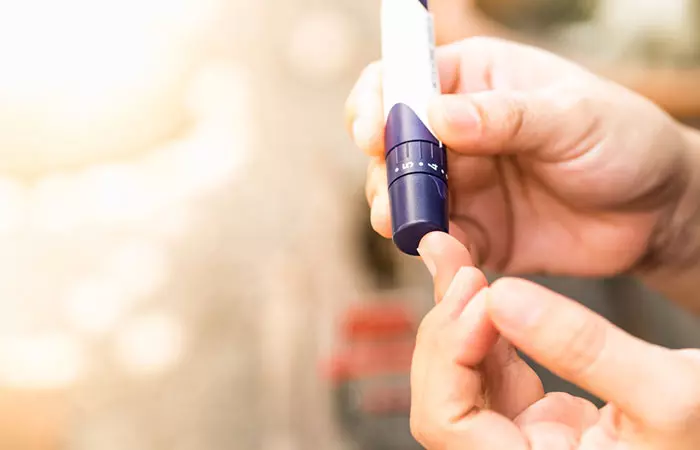
According to the American Diabetes Association, drinking red wine can lower your blood sugar for up to 24 hours. But that aside, there is some research that shows how red wine can help diabetics.
As per a recent study, moderate red wine consumption can reduce the risk of heart disease in patients with type 2 diabetes (21). But apart from moderation, what diabetics (the ones on medication, especially) must also consider is the time of day when they consume the wine.
Moderate consumption of red wine is associated with reduced risk of developing diabetes (22). However, the doctors involved in the study don’t recommend their patients to start drinking just to reduce the risk of diabetes. One must also know that different types of alcohol can have different effects on blood sugar levels. For example, beer can raise blood sugar while hard drinks can dangerously lower the levels.
It is important to take your diabetes case seriously because the statistics are alarming. According to the WHO reports, the number of diabetes patients has increased rapidly – from 108 million registered cases in 1980 to 422 million in 2014 (23). Diabetes can also cause stroke, kidney failure, heart disease, and lower limb amputation (24).
Another study has confirmed that taking a glass of red wine every night might cut the risk of diabetes (25). It suggests that the non-alcoholic constituents of red wine could be given credit for its antidiabetic properties. And as per another Ukraine study conducted on diabetic rats, red wine and its polyphenols show great promise in treating and even preventing diabetes (26). Tannic acid, one of the non-alcoholic compounds in red wine, can also aid in diabetes treatment (27).
Red wine is one of the richest dietary sources of resveratrol, which, as per a study, can improve the health of diabetics’ arteries (28).
If you are in a dilemma as to take red wine or white wine for diabetes treatment, here goes your answer – in one study, red wine could inhibit the activity of alpha-glucosidase (an enzyme that triggers the absorption of glucose by the small intestine) by nearly 100 percent, while white wine could achieve so by only as much as 20 percent. Red wine also contains 10 times more polyphenols than white wine (29). That could be responsible for this desirable effect
Red wine also contains 13 times more resveratrol than white wine (because red wine ferments for a longer time with the grape skins). Research shows that the post-meal spike in sugar levels is one of the biggest reasons for inflammation, which often leads to diabetes (30). But if you have a glass of red wine with your evening meal, your blood sugar levels would be about 30% lower than if you hadn’t taken the wine.
Although thee studies are interesting, the results should not be seen as a green light to drink lots of alcohol as it may exhibit undesirable side effects (31).
4. Fights Cancer
Resveratrol in red wine can destroy pancreatic cancer cells. The antioxidant achieves this by crippling the function of the cells’ core energy source (also called the mitochondria) (32).
In fact, the importance of red wine during cancer treatment is so much that doctors wouldn’t advise the patient to give up on red wine if (s)he is already taking it (in moderation, obviously). Research suggests resveratrol not only destroys the malignant cells but also protects the normal tissue from the detrimental effects of radiation.
More interestingly, pancreatic cells are particularly resistant to chemotherapy. This is because the organ usually pumps powerful digestive enzymes into the duodenum (the first part of the small intestine right behind the stomach). This natural pumping process of the pancreas can even rid the needed chemotherapy from cells. But what’s fascinating is that resveratrol in red wine can also reduce the power available to pump chemotherapy out of the cell.
Research has also revealed that individuals who take at least a glass of red wine a week are less likely to suffer from distal colorectal cancer (33).
Resveratrol also makes the cancer cells more sensitive by obstructing the proteins that otherwise inhibit chemotherapy treatment (34). And the concentration of resveratrol in red wine can be as high as 30 micrograms/ml.
As per a Chinese study, red wine polyphenols can also inhibit the proliferation of colon cancer cells (35). The wine was also found to be better than white wine in breast cancer treatment. Apart from resveratrol, another compound called myricetin in red wine gives it its cancer-preventive properties. And in mice studies, red wine polyphenols were found to delay the onset of tumors. Another Spanish study suggests that red wine is negatively associated with the development of lung cancer – although further research is warranted (36).
One report published by Harvard Medical School emphasizes on the possibility of red wine preventing prostate cancer (37). Men who consume moderate amounts of red wine are only half as likely to suffer from prostate cancer than those who don’t drink it at all. Researchers assume that the resveratrol in the beverage might work against the male hormones that stimulate the prostate gland. Red wine can also lower the risk of certain advanced and aggressive cancers by as much as 60 percent (38).
And as per researchers from the University of Colorado, if you are going to drink alcohol, choose red wine (39).
But there’s some contradictory evidence too – which is as important. Research states that red wine can, conversely, increase cancer risk. This could be attributed to the alcoholic content in the wine (40). So we recommend you take your doctor’s advice at least in this aspect – as cancer is not an everyday ailment that we can take a chance at. Also, to reduce the ill effects of alcohol, you can add a low-calorie mixer to your drink or have a glass of water in between each drink. Of course, the best way is to practice moderation or to quit altogether.
5. Prevents Obesity
Research says that resveratrol in red wine can convert the bad fat into calorie-burning brown fat. And diets containing the antioxidant can help combat obesity (41). Resveratrol enhances the oxidation of dietary fats and prevents the body from getting overloaded. It converts white fat into brown fat (also called beige fat) that burns off as heat – thereby preventing obesity and metabolic dysfunction.
But it is important to note that certain wine brands, especially merlot and cabernet sauvignon, contain a fraction of resveratrol that is found in grapes. This is because most of the beneficial polyphenols are insoluble and filtered out during the winemaking process. Though this may not be the case with all brands of red wine, it is important to inquire into the winemaking process from the seller. A little extra knowledge can help.
Red wine consumption can also reduce the damaging effects of smoking (42). It can reduce inflammation and the aging process in cells (triggered by an enzyme called telomerase), which usually accelerates post smoking.
As per another Spanish study, the polyphenols in red wine modulate the gut microbiota and help prevent metabolic diseases in obese individuals (43). These polyphenols can also prevent cardiac ailments associated with obesity (44).
According to a report by Purdue University, resveratrol gets converted into piceatannol post consumption. Piceatannol alters the way adipogenesis (the process where fat cells in the early stage become mature) happens – which means the compound can delay or even inhibit adipogenesis (45). Piceatannol is also found in the skins of red grapes and their seeds, blueberries, and passion fruit.
A very common query is does wine make you gain weight? On this note, allow us to stress this again – M-O-D-E-R-A-T-I-O-N. As per a few studies, the calories and alcohol in red wine may lead to weight gain and increase disease risk if taken in large amounts over long periods (46). They can cause cancer as well. Hence, limit consumption to 1 drink or less for women and 2 drinks or less for men. Per day.
6. Prevents High Blood Pressure And Stroke
One report by the Harvard Medical School recommends non-alcoholic red wine over the regular variety. The wine protects against artery damage, consequently lowering blood pressure (47) (48). Also, consuming non-alcoholic red wine can elevate nitric oxide levels in your blood. This is good news as nitric oxide promotes relaxation of the walls of the blood vessels, encouraging better blood flow. However, regular exercise and a proper diet are the best options on any given day.
Spanish researchers also say that the alcohol in red wine weakens its ability to lower blood pressure (48). So, non-alcoholic red wine could be the way to go.
Red wine can also reduce blood pressure by lowering stress. Stress can elevate your blood pressure levels, but a serving of red wine at night can help you relax.
Moderate consumption of alcohol may reduce the risk of ischemic strokei Stroke that occurs when blood clots hinder blood flow through the arteries leading to the brain, causing brain damage. (49). Anything beyond that amount could be problematic – as alcohol can elevate blood pressure levels, causing stroke.
Resveratrol in red wine can also prompt the brain cells to defend themselves from free radicals (50). But more research is required – as not all types of red wine contain the same amounts of resveratrol. But otherwise, if you choose to drink, let red wine be the first choice – as it can protect the brain (51).
But again, we have contradictory evidence here – another set of researchers say that the blood pressure effects of red wine are the same as beer. And removing alcohol from red wine may not make a big difference. As per researchers, it’s a delicate balance. Men must drink less than 2 drinks per day; and women, not more than 1. Alcohol, when taken in moderation, can decrease the risk of blood clots – which might otherwise cause strokes (52). But yes, you got it – moderation is key.
In yet another study, it was found that red wine polyphenols didn’t lower blood pressure levels (53). The drink may not even have positive effects on hypertension. And another Australian study suggests that red wine might elevate blood pressure levels in normotensive meni Males who have normal blood pressure levels or those whose levels fall within the healthy range. (54).
7. Promotes Longevity
Research reveals that resveratrol in red wine can increase lifespan (55). The antioxidant could also provide higher energy levels. Though the tests have been conducted on worms, researchers believe similar effects can be seen in humans. Resveratrol might activate an evolutionary stress response in human cells that might enhance longevity.
The antioxidant is found in some berries, grapes, peanuts, and cacao beans – it is produced in these plants as a response to stress. It is a naturally occurring phytoalexin (also called defender of the plant) that is produced in response to mechanical trauma (like an injury), ultraviolet light, or infection by fungi – it provides a means for defense (56). Research suggests that it can work similarly in humans as well.
An Italian study says that wine can increase lifespan by inducing longevity genes (57). And according to the Stanford Center on Longevity, resveratrol in red wine can protect our neurons from the undesirable effects of aging (58). However, the amount of resveratrol that you can get from red wine is quite small compared to that in a pill. If you should get a comparable amount of resveratrol from wine alone, you might have to drink 600 bottles of red wine per day (59). And that’s certainly not a good idea, right?
8. Reduces Stress

We have already seen this.
And yes, it is resveratrol again. This compound in red wine stimulates a particular protein that activates certain genes that repair DNA, suppresses the tumor genes, and promotes longevity genes. Basically, what we mean to say is a glass of red wine a day can help you stress less. The best way to achieve this is to have a glass of wine along with your dinner, and not right before sleep – this can have a calming effect on you without disturbing your sleep cycle.
But the stress-relieving effects of red wine are not applicable to pregnant women. Women who are expecting do undergo a lot of stress – and drinking red wine is not the best option to combat it. Alcohol, in any form, can be detrimental to the baby (60).
Comfort foods like cookies sure can relieve stress, but the downside is you crash. Fruits and vegetables, and red wine, of course, relieve stress and also offer antioxidants that can be beneficial (61).
9. Improves Bone Strength
One study published in the Oxford Academic Journal has revealed that resveratrol in red wine can improve spinal bone density in men suffering from metabolic syndrome (62). The study suggests that resveratrol positively affects the bone by stimulating formation or mineralization. The compound also has anti-inflammatory properties that can prevent bone loss. It stimulates bone-forming cells in the body (63).
One or two glasses of wine can work as good as drugs to protect older women from thinning bones. Moderate alcohol intake post menopause was found to maintain bone strength in the later years. More interestingly, the imbalance between the dissolving of an old bone and production of a new bone is what causes osteoporosis in older women – and alcohol, when consumed in moderation, remedies this imbalance (64). Nevertheless, the National Osteoporosis Society warns against drinking more alcohol to protect the bones. Excessive alcohol can increase the risk of fractures.
10. Reduces The Risk Of Cataracts
As per studies, resveratrol and other antioxidants in red wine can help prevent blindness (65). In another study by the Washington University School of Medicine, resveratrol in the wine prevents the out-of-control growth of the blood vessels in the eye. It also prevents diabetic retinopathyi A disease characterized by blindness in diabetic patients that is caused by retinal damage due to high glucose levels. and age-related macular degeneration (66).
Resveratrol might also reduce the risk of cataracts by increasing the levels of glutathionei An antioxidant produced by the body's cells that help neutralize free radicals and prevent associated ailments. in your system (67).
As per other studies, grapes (and wine coming from them), green or red or black, can act as a magic bullet in the fight against cataracts (68).
11. Promotes Liver Health
Modest wine consumption was not only found to be safe for the liver, but it could even cut the risk of non-alcoholic fatty liver disease (69). On the contrary, intake of beer or liquor could increase the risk of the disease by four times.
12. May Help Prevent Alzheimer’s
Resveratrol in red wine was found to repair the leaky blood-brain barriers, allowing the blood from the body to enter the brain. This repair slows down the advancement of cognitive issues in Alzheimer’s patients (70). Alzheimer’s patients face further problems by nervous tissue inflammation, which is often caused by the secretion of harmful immune molecules from the body into the brain. Resveratrol shuts out these immune molecules, which would otherwise cause inflammation and destroy neurons.
Researchers have also been studying the compounds that are left behind after red wine passes through the gut – they call these compounds human gut metabolites (71). These metabolites can prevent the brain cells from dying.
13. Boosts Brain Health
According to research conducted by the Yale School of Medicine, though wine molecules don’t have taste or flavor, they stimulate the brain to create that sensation. This makes your gray matter work harder, boosting brain health (72). In fact, the taste may never be in the wine, but it is created by the brain of the wine taster.
Moderate regular doses of red wine were also found to have an antioxidant effect in the hippocampus of diabetics. Resveratrol has similar effects on both the hippocampus and the frontal cortex (73).
But otherwise, excessive alcohol consumption can deteriorate your thinking skills and cause brain damage (74).
However, we again have a contradiction. Some research does not support the common belief that a glass of red wine a day can prevent brain damage (75). Hence, if you have any kind of brain ailment and also happen to consume wine, stop right away and consult your doctor. Don’t take a chance.
14. Fights Depression
As per research, 2 to 7 glasses of red wine a week might reduce depression. The same research also suggests that exceeding the limit, conversely, can cause depression.
Getting to the percentages (for clarity), consuming 5 to 15 grams of alcohol per day is considered fine. And a small glass of wine contains about 9 grams of alcohol. Now you get the idea, don’t you?
15. Improves Sleep

The grapes red wine is made of are rich in melatonin, the very same compound that induces sleep in humans. This hormone is produced in our brain by the pineal gland. And almost grapes used to produce red wine contain more melatonin than our blood. According to scientists, the melatonin content in red wine could be high enough to help us sleep (76).
The melatonin in red wine can regulate the circadian rhythm, thereby aiding sleep.
In yet another study, people who drank red wine reported better sleep quality than those who drank plain water (77).
16. Enhances Lung Function
As per a report, resveratrol in red wine can mitigate the inflammatory process that occurs in chronic obstructive pulmonary disease (COPD) (78). According to researchers from the National Heart and Lung Institute at Imperial College London, smoking is the primary cause of COPD – and the disease is irreversible. One Greek study found that two glasses of red wine assuaged the damage to the arteries caused by one cigarette.
According to an Ohio study, resveratrol can aid in the treatment of pulmonary hypertension (79). Although more research is required to scale the study, this does appear promising to human health.
17. Prevents Tooth Decay
Studies have revealed that red wine can protect your teeth by preventing cavities. The wine can help remove bacteria from the teeth, which otherwise produce acid that damages the teeth over time (80).
But this could be a trade-off between the pros and cons – a lowered risk of cavities vs. stained teeth and the extra calories from alcohol. In moderation, however, you can enjoy the benefits.
The bacteria red wine removes is streptococcus, which is routinely found in dental cavities. The polyphenols in red wine can help remove these bacteria (81).
The studies have contraindications, though. Firstly, the research was conducted in a laboratory, and certain critics claim that the conditions inside the laboratory are way different from those inside the mouth. It also could be possible that the alcohol, acids, and sugars in red wine could nullify the benefits of its polyphenols.
Hence, two things to remember – moderate consumption is what we are talking about here. And even before that, consult your dentist and take his/her advice.
18. Boosts Levels Of Omega-3 Fatty Acids
We don’t have to tell you how important omega-3 fatty acids are. According to a report by the Catholic University, moderate red wine intake can boost the levels of omega-3 fatty acids in red blood cells. The study also suggests that red wine does better than other alcoholic drinks (82). Researchers guess this effect could be attributed to the wine polyphenols.
This could also explain why red wine consumption has been linked to heart health – as omega-3s are known to promote heart health.
19. Strengthens The Immune System
Research has found that a daily glass of wine (red wine, in specific) can boost the immune system and help fight infections (83). And a glass or two of red wine can also help you beat those annoying colds.
As per research, this protection can be stronger with red wine than with other types of alcohol (84).
According to a study by the University of Florida, red wine doesn’t suppress the immune response – which basically means the wine won’t harm your immune system (when taken in moderation, of course). You can get the benefits of red wine without any harm to your immune function (85).
20. Helps Fight Parkinson’s Disease
According to a 2008 study published in the European Journal of Pharmacology, resveratrol can protect the cells and nerves and also reduce brain damage in patients with Parkinson’s disease. The study was conducted on rats with positive results.
Resveratrol was also found to protect the brain cells from damage caused by tubes inserted into the brain for DBS (deep brain stimulation) treatment.
Another American study states that resveratrol and quercetin in red wine might offer neuroprotection in patients with Parkinson’s (86). However, further research is required.
The catechins in red wine can also protect the brain against the injuries caused by neurotoxins (that are involved in the onset of Parkinson’s disease) (87).
Aren’t these benefits of wine amazing? But are there any benefits of red wine for the skin? Keep reading to find out!
How Does Red Wine Benefit The Skin?
Find here what are the benefits of red wine for your skin.
21. Slows Down Aging And Makes Skin Glow
We have already seen how red wine slows down the aging of your body and brain. Well, it also works well in keeping your skin young.
Wine has antioxidant properties, which may help slow down skin aging (88). In fact, researchers predict that skin creams with resveratrol could be the next big thing in the cosmetic industry.
Red wine can also restore your skin’s original glow. The polyphenols in the wine can prevent cell oxidation that ages the skin (89). Also, the antioxidant properties of resveratrol work exceedingly well against the oxidative stress the skin cells are quite often subjected to (90). This antioxidant is so potent that it is now being researched for its ability to prevent skin cancer and other dangerous skin ailments.
Resveratrol in red wine also protects the skin from the harmful UV-induced effects (91).
22. Fights Acne
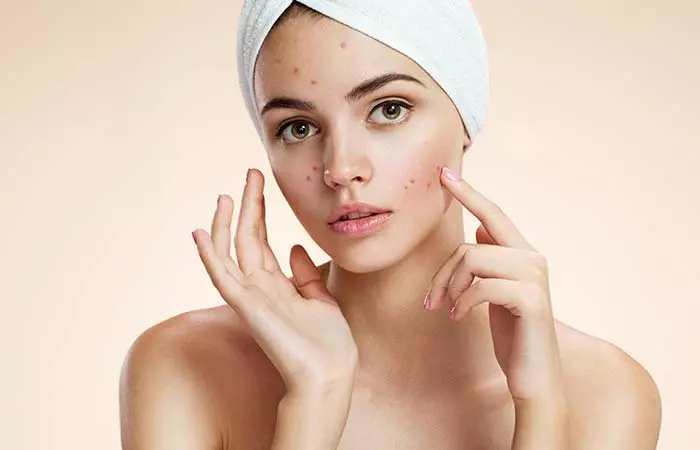
Resveratrol in red wine can slow down the growth of bacteria that cause acne, as per a recent study. It also inhibits keratinocyte proliferation, which can cause acne lesions (92).
The results were particularly effective when acne sufferers, along with a glass of red wine, also went for a topical treatment with benzoyl peroxide. Combining resveratrol and benzoyl peroxide could offer prolonged antibacterial effects on the acne bacteria (93).
23. Treats Sunburn
Did you know that sunburn can occur in just 20 minutes but can take as long as 6 hours to show up? This means, you could be sunburnt without even realizing it. And guess what – this is the biggest risk factor in the onset of skin cancer. But worry not – as rubbing red wine on the affected areas can ease sunburn (94).
The flavonoids in red wine prevent the skin from forming reactive oxygen species, compounds that react with UV rays and cause sunburn. This does not mean you can ditch your sunscreen altogether. Continue using your sunscreen, but also have a sip of red wine now and then.
| How To Prepare A Red Wine Face Mask You can either use red wine or use a red wine face mask. And preparing the mask is easy. In addition to red wine, you might also want to include seaweed and aloe vera. Mix one teaspoon each of the three ingredients in a bowl. Wash and tone your face, and apply the mix to your face (or the affected area) using a cotton ball. Leave the mask as it is for 15 minutes. Rinse with cool water and pat dry your face with a soft, clean towel. |
Any Benefits For Hair?
Here are some of the benefits of red wine for hair.
24. Promotes Thick Hair
Drinking red wine is believed to improve circulation, ensuring adequate blood circulation to the scalp. This can reduce hair loss.
You can also rinse your hair with red wine. Post shampooing and using a conditioner and washing your hair, you can rinse with red wine.
Resveratrol in red wine is also believed to reduce inflammation and the formation of dead cells on your scalp, thereby promoting hair growth and making it thicker.
However, we would like to tell you that there is no concrete evidence for the benefits of red wine for hair. Hence, practice caution and consult a hair care specialist.
And coming to what we spoke in the very beginning – how is red wine made?
How Is Red Wine Made?
It is an interesting process, you see. Firstly, the grapes are handpicked. They then go through a stage of physical processing. The grapes are tipped into a bin and taken to the winery, where they are transported to the grape-processing equipment by a screw mechanism.
Then, there is the destemming process. The bunch of grapes arriving at the winery is a mixture of stems and leaves and other parts of the plant – which might render a bitter taste to the finished wine. Hence, the stems and leaves are separated from the fruit. Post this, the grapes are usually lightly crushed. The crushing intensity can vary from light to hard as per the winemaker’s preference. The crushed mixture (also called the ‘must’) is pumped into a stainless steel (or concrete) vessel for fermentation.
This is where the separation of the solid and liquid phases happens. The skins of the fruits float to the surface and form a cap. The temperature is also controlled as fermentation releases heat, which, if not controlled, can impair the flavor.
Post this, the juice is extracted from the grapes (also called ‘pressing‘). And then, there is the second stage of microbiological transformation – also called malolactic fermentation – where malic acid in the grapes is converted into lactic acid under the influence of bacteria. The red wine is then decanted (a sulfur dioxide preservative is added for preventing bacterial spoilage). And then it is aged before bottling (the period varies from a few days to several months) in stainless steel or concrete tanks. The wine then undergoes fining, where any faults (like excess tannins) are finally corrected. Filtration happens post this, where the wine is made completely clear by removing any yeast cells or bacteria that remain (this, again, depends on the winemaker’s preference). And in the end, the wine is filled in glass bottles with cork stoppers (called bottling).
All well – there goes the ton of research. The benefits (and a few contraindications) of red wine. But there’s another important question lurking around.
We saw white wine, too, has some benefits. And we have seen red wine is far better. But still, how else do these two types of wine differ?
Red Wine Vs. White Wine: Which Is Healthier?
The primary difference has to do with how the grape juice is fermented. For making white wine, the grapes are pressed, and the skins, seeds, and stems are removed before fermentation.
But in the case of red wine, the crushed grapes are directly transferred to vats, and they ferment with the skins, seeds, and stems (often the stems and leaves, if any, are removed). These grape skins lend the wine its color.
And since red wine is steeped with the grape skins (and white wine is not), it contains more beneficial compounds than white wine.
Certain types of white wine are made of white grapes while certain types of red wine are made of red grapes.
But in terms of nutritional content, red wine wins. Hands down. Antioxidants are more concentrated in red wine. Wine also contains ethanol, which has undesirable effects – it impairs fluid balance and has pro-oxidant effects. But the polyphenols in wine counter these negative effects. Since red wine has a higher concentration of polyphenols, it works better in negating the harmful effects of ethanol (93).
Wine might contain certain nutrients that can help the tissues in the lungs function better. Though white wine seems to have the upper hand regarding lung health, red wine also contains these particular nutrients that can boost lung health. In the end, we can say that in the red vs. white wine debate, both have their pros and cons that one must keep in mind before consumption.
 Trivia
TriviaThe benefits of red wine are simply unbelievable. Oh yes, and there are some contradictions too. Which are also a must-know. Just like the side effects we are going to see now.
What Are The Side Effects Of Red Wine?
, Certified Nutritionist, says, “Red wine contains alcohol and sugar, both of which are best consumed in moderation. Additionally, wine fermentation uses yeast, which can remain dormant in the final product and take up residence in your body. Even the small amounts of yeast byproducts left in bottled wine can feed yeast growth from colonies already living in your body. Yeast is one of the biggest culprits, causing food cravings and a leaky gut.”
Check out here what are the adverse effects of not drinking red wine in moderation.
- Blood Thinning Effects
Resveratrol is also known for its anticoagulant propertiesi Properties involved in the prevention of blood coagulation or blood clotting, reducing the risk of stroke. . This means, the compound can inhibit the coagulation property of blood platelets that are required for blood clotting. All this becomes a threat when you take resveratrol along with blood-thinning medications. The result could be excessive bleeding.
- Effects During Pregnancy And Breastfeeding
Alcohol, in any form, is unsafe to consume during pregnancy. It can cause birth defects in the infant, and can even cause miscarriage.
Red wine is a big no-no to breastfeeding mothers too. The alcohol passes through breast milk, leading to abnormal learning skills in the baby (94).
- Inhibits Muscle Healing
When taken in high doses, resveratrol can hamper the muscle repair cycle and contribute to aging. Wine consumption might also increase the risk of breast cancer.
- Headaches
Also called red wine headache, this is a condition often accompanied by flushing and nausea. The headache occurs within 15 minutes after taking a glass of red wine. This condition is not observed with white wine or other alcoholic beverages.
The high concentrations of sulfites, tannins, histamines, and prostaglandins in red wine could cause these headaches.
A few ways you can prevent these headaches:
– Drinking a glass of water after each glass of wine.
– Take two aspirins, like ibuprofen or acetaminophen, which are blood thinners. These are recommended only if you are sticking to one or two glasses of wine, and not more.
– Avoid eating sugary stuff with wine.
- Other Side Effects
Drinking wine can also cause or worsen asthma, gout, insomnia, high blood pressure, and pancreatitisi Inflammation of the pancreas caused when the digestive system enzymes that flow through the pancreas start irritating its cells. . If you are someone who is at a risk of or already suffers from any of these conditions, abstain from consuming red wine.
Consuming red wine in excess can cause one or more of these side effects. However, moderate intake, as per research, is fine. But to be on the safe side, refrain from consumption if you are at any likely risk.
Coming to the types of red wine, apart from what we have seen in the beginning, we also would like to add a few more to the list.
– German red wine, which includes Trollinger, Spätburgunder, and Dornfelder.
– Dry red wines, which are what we already saw – Merlot, Pinot Noir, Red Zinfandel, Cabernet Sauvignon, and Shiraz.
– Patritti wine, an Australian wine brand founded in 1926.
And in case you are still wondering…
How To Drink Wine In Moderation?
- Keep a log of your wine intake. This helps you know when you are drinking, and how much.
- Develop your own strategies for wine intake. Like having a glass of water in between two drinks.
- Or making sure you drink only with certain ‘responsible’ drink buddies. Resolve to stick to the limits, no matter what.
If you are wondering how to serve red wine, or any wine for that matter, it’s simple too.
- Choose the right wine glass. Serve wine slightly cool as that is when it tastes better. Learn the ritual of opening a bottle of wine. It is important. Decant the red wine. This also improves its taste.
- Learn how to pour a standard wine serving, and how to pour without the wine dripping.
- Also, learn how to hold the wine glass properly.
- And lastly, know how long wine keeps after the bottle is opened.
You can also use red wine for cooking. You can choose something that’s dry and light to medium. Cabernet, merlot, zinfandel, and pinot noir all work great. And talking about recipes, well, here they are!
What Are The Popular Red Wine Recipes?
1. Grilled Salmon With Red Wine Butter
What You Need
- 1 minced shallot
- ½ cup of red wine
- ½ cup of salted butter
- ¼ cup of balsamic vinegar
- 1 ½ cups of thyme leaves, fresh
- 2 fillets of wild salmon
- Olive oil, as required
- Salt and pepper, to taste
Directions
- In a saucepan, over medium-low heat, combine the shallot, wine, and balsamic vinegar. Cook for about 10 minutes or till the liquid is reduced to half.
- After it cools, add the butter, thyme, and a few inches of pepper. Thoroughly mix the ingredients using a spatula. Scoop the mixture onto a plastic wrap. Roll it, twist the ends, and store in the freezer as you cook the fish.
- Preheat a grill on medium-high. Rub the salmon with olive oil, salt, and pepper and lay it on the grill. Cook for 4 to 5 minutes and then flip it and cook for 2 to 3 minutes again.
- Serve with a slice of red wine butter melted on top.
2. Red Wine Risotto

What You Need
- 500 ml of chicken or vegetable stock
- 85 grams of butter
- 1 chopped medium onion
- 200 grams of round grain risotto rice
- 500 ml of red wine (merlot, preferably)
- Grater parmesan, or any other alternative, to serve
Directions
- In a saucepan, heat the stock and keep it warm beside the stove. In another shallow saucepan, melt half the butter. Add the onion with salt and pepper and sauté for 5 to 7 minutes or until soft. It must absorb the butter.
- Stir in half the wine along with a little salt and pepper. Simmer for 5 to 7 minutes until the rice starts to dry. Keep stirring. You can add a couple of ladlefuls of hot stock and continue to simmer – keep stirring gently. Once the rice has dried and needs more liquid, add the remaining wine.
- Keep adding more stock in batches, and keep stirring. By the time you are done with cooking, the rice will be tender. The starch will be leaching from the grains. This might take about 30 minutes – but do use plenty of stock.
- Remove the risotto from heat and add the remaining butter in pieces. Stir it into the rice as it melts. You can taste and adjust the seasoning.
- Serve in shallow bowls with a sprinkling of parmesan. Best served within a few minutes.
3. Red Wine Reduction Sauce
What You Need
- ¼ cup of minced shallots
- ½ cup of beef stock
- ½ cup of red wine
- 2 tablespoons of butter
- 1 tablespoon of chopped rosemary, optional
- Olive oil, as required, for coating the pan
Directions
- Over medium heat, add enough olive oil in a sauté pan and coat it.
- Add the shallots and cook until they are translucent.
- Add the red wine and the stock.
- Now, add the butter and chopped rosemary.
4. Red Wine Poached Pears

What You Need
- 4 ripe and firm pears, peeled and cored
- 750 ml of red wine
- 1 cup of granulated sugar
- 1 cinnamon stick
- Zest and juice of 1 orange
- 4-6 cloves
Directions
- Mix red wine, sugar, cinnamon, orange zest, orange juice, and cloves in a large pot.
- Stir until the sugar dissolves and bring to a gentle simmer.
- Add the peeled and cored pears, ensuring they are submerged in the liquid.
- Simmer for 25-30 minutes until the pears are tender. Turn them occasionally for even poaching. Remove pears once done and set aside.
- Increase heat and boil the liquid for 10-15 minutes until it thickens into a syrup.
- Remove the cinnamon stick and cloves, then pour the syrup over the pears.
- Serve it warm.
The recipes are great. But when it comes to buying red wine, there are few things we all must know.
How To Buy Red Wine? What To Consider?
When you want to buy red wine, keep these things in mind. Always.
- Tannin. To lower the tannins in the wine, the better enjoyment of a smooth wine, you would feel. Low tannin options are – Pinot Noir, Barbera, and Sangiovese. High tannin options are – Cabernet Sauvignon, Syrah, and Nebbiolo.
- Labeling. Check not just which grapes are in the bottle, but also which region those grapes come from. This can maximize your options.
- Blend. Most red wines are blends. But don’t worry about this. Simply choose a style that you like.
- Body. How bold or how light your red wine is going to be.
- Oak. Red wines are most often fermented in oak as it rounds out the rough edges of the wine and gives it a cohesive texture.
- Vintage. Understand what time can do to your red wine.
- Price. You can go for the inexpensive varieties often, but don’t shy away from splurging now and then.
Great. You know what to look for while buying your red wine. But how to select? And how do you store it?
How To Select And Store Red Wine?
Proper wine storage is essential to maintain its quality, color, taste, and flavor. Wine is quite perishable because of its low alcoholic content, so it should be stored with immense care. Red wine bottles should be ideally stored on their sides rather than upright. This will ensure that the corks stay moist. If the corks dry out with time, air can seep through and oxidize and spoil the wine.
People generally think that a wine’s taste keeps getting better with age, but this is not the case with all wines. The majority of red wines made today are meant for immediate consumption. These wines do not improve with age and should be consumed within a month or two. Red wines that are meant to improve with age last long but only with proper storage.
Red wine should be stored away from the UV light of the sun and even strong, fluorescent light as these can spoil it. Wine is usually stored in dark bottles to reduce the exposure. But this does not completely secure its taste as even a little light can seep through. You can keep the wine in a box or wrap it in a cloth. Wine should be stored away from chemicals, food, and other household odors as the cork of the bottle is quite porous; it can easily absorb scent or odor, ruining the taste and flavor of the wine. You can store your red wine in a specialized wine cellar to maximize the storing capacity. The wine should not be subjected to any kind of vibration as vibration interferes with aging and stirs up sediments that aid the maturing process.
Temperature is one of the most important factors influencing the quality and development of wines. The ideal serving temperature of wine is between 50 to 65 degrees Fahrenheit. Serving wine too warm makes the taste of alcohol overly evident, and serving it too cold will make it more bitter and astringenti An alcohol-based liquid that helps tighten skin pores, cleanse the skin, and reduce acne flare-ups by removing excess oil. .
Allow the bottle to stand upright for a few moments before serving it so that any sediment present in the wine can settle down. Once opened, try to finish the bottle within two to three days as oxygen begins to enter the bottle, ruining and degrading red wine. You can store it in the refrigerator for a day or two and remove it in advance to warm it up to a suitable temperature. Red wine is best served in a distinct oval or egg-shaped glass to enjoy it to the fullest.
Following these storage tips will help you maintain the quality and flavor of your favorite wine. But what about the other uses of red wine? Let us find out.
What Are The Best Uses Of Red Wine?
Red wine is used in cooking, as a marinade, as a cooking ingredient, and as a flavoring agent in a finished dish. Adding wine to cooking intensifies the flavor and aroma of food. Care should be taken regarding the amount of wine used during cooking. Adding too little wine will be inconsequential and too much will be very overpowering.
Use a small yet substantial quantity to enhance the flavor of the dish. Do not add wine to the food just before serving as it gives a harsh quality to the dish. Simmer wine for 10 minutes with the food or sauce to enhance the dish. Since red wines are highly acidic in nature, they punch up the flavors in the dish, provided there is not too much tannin in them.
Red wine is mainly used for flavoring desserts. It is used for braising and stewing meat, and for deglazing pans to make sauce for chicken or steak. Even dry red wine is used for cooking.
You might still have more questions. And we do have the answers.
Infographic: Popular Red Wine Cocktails
Red wine pairs well with meat or can be enjoyed on its own. You can savor the deep, bold notes of red wine along with other beverages as well. Some of the most delicious cocktails feature red wine as an ingredient.
Check out the infographic below to find out what popular red wine cocktails you can make at home to enjoy it to the fullest.
Some thing wrong with infographic shortcode. please verify shortcode syntax
Conclusion
So what’s the conclusion? Something that we have been harping about all across the post. Red wine is great. It offers superb benefits. But only if you take it in moderation.
Keep that in mind, and you will be happy. And we will be happy too. Also, tell us how this post has helped you. Do comment in the box below.
Red wine benefits you in multiple ways when taken in moderation. Its benefits can be attributed to catechins, epicatechin, resveratrol, and proanthocyanidins. Moderate consumption may boost cardiovascular, liver, and brain health. It also lowers cholesterol levels and minimizes the risk of diabetes, cancer, obesity, stroke, and blood pressure. It also helps improve sleep and promotes hair and skin health. However, overconsumption may trigger undesirable effects like blood thinning, miscarriage, congenital disabilities, impaired muscle healing, and headaches. Moderate intake is highly advised.
Frequently Asked Questions
What are the common misconceptions about red wine?
Some of the common misconceptions about red wine include:
• All red wine is healthy: Some red wine varieties, like Pinot Noir, have more antioxidants compared to other types, making them healthier. Additionally, moderate red wine consumption may have some health benefits, excessive drinking can lead to health issues
• The older the wine, the better: Not all red wines improve with age; many are meant to be enjoyed young.
• All types of wine offer the same benefits: Red wine, in particular, contains higher levels of antioxidants like resveratrol, often linked to health benefits like improved heart health. White and other types of wine have fewer of these compounds, so their health effects may differ.
Can you drink wine if you have cirrhosis of the liver?
“Absolutely not! Cirrhosis is a huge red flag that your liver is already heavily damaged and cannot work as well as it used to. The alcohol in the wine will create an even more toxic environment in your body, causing damage to other organs as well,” says Olesya Wilson.
Is having a glass of wine at night healthy?
Yes. It can regulate your cholesterol levels and can even help you sleep better. But remember, just one glass of wine.
What is the optimal serving temperature of wine?
For red wine, it is 62 to 68 degrees Fahrenheit. And in the case of white wine, it is 49 to 55 degrees.
What are the benefits of bathing in red wine?
The bad news is it might dehydrate your skin. The good news is the wine polyphenols can do your skin good. So, proceed with care.
Is red wine vegan?
Depends on how the red wine is filtered. The fining agents through which the wine is filtered could be either animal-derived (like blood and bone marrow, chitin, egg albumen, etc.) or animal-friendly (like carbon, limestone, etc.). Check with your supplier.
What is the alcohol content in red wine?
Around 13.5-14.5%. Which is on the higher side.
What does red wine taste like?
Hard to answer, because red wines are diverse. If you want to know the taste, you can try it yourself. If you don’t want to drink, don’t bother about how the wine tastes.
Which is healthier – beer or wine?
Wine. And red wine.
Can red wine reduce belly fat?
Anecdotal evidence suggests that the intake of red wine in moderation may help reduce belly fat. However, limited research is available in this regard.
Can we drink red wine on an empty stomach?
No. Consuming red wine in large quantities on an empty stomach may have a negative impact on your body. However, drinking moderate amounts may not be a cause for concern.
Illustration: Benefits Of Red Wine, How To Drink It, Uses, & Side Effects
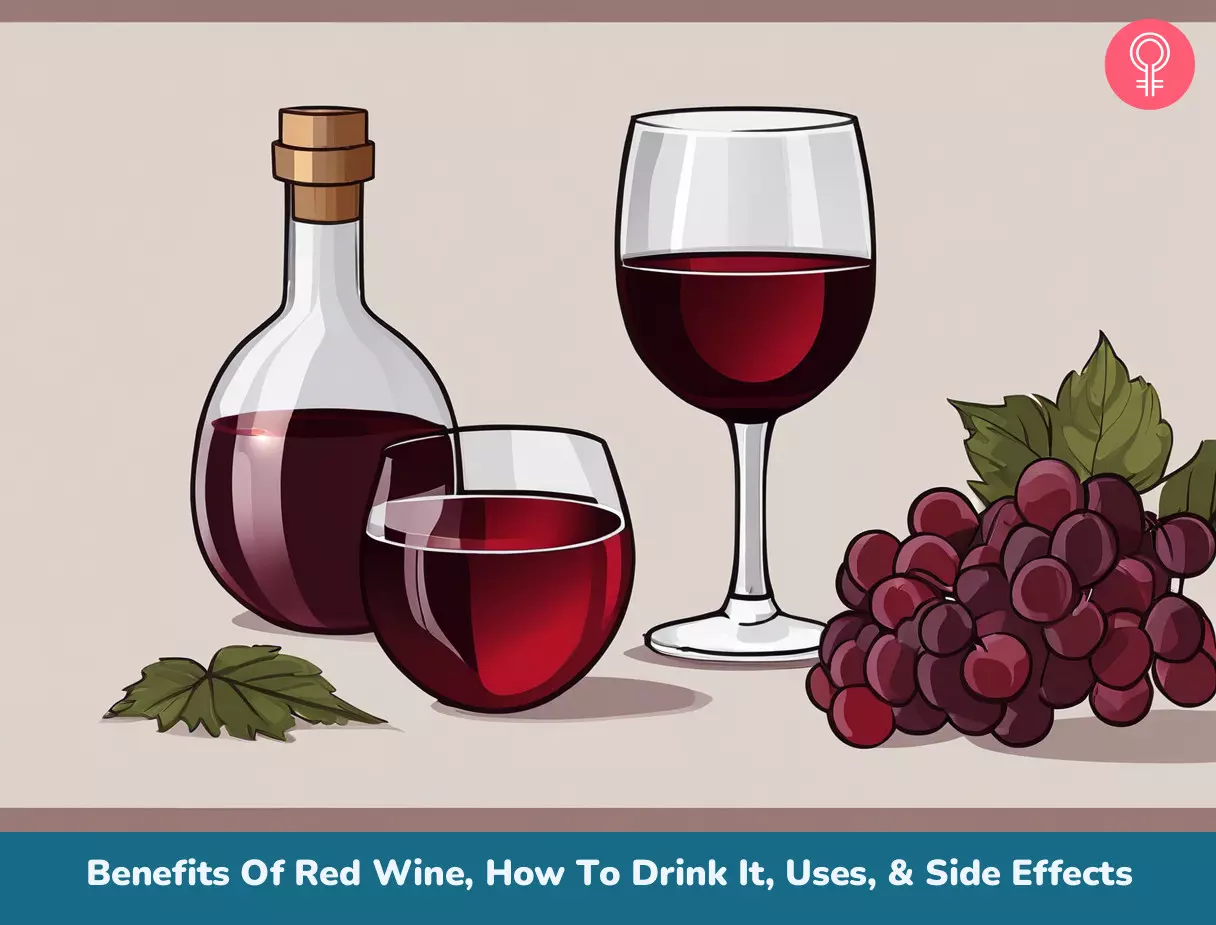
Image: Stable Diffusion/StyleCraze Design Team
Drinking red wine has its own health benefits, from improved heart health to better brain function. Watch the video below to learn more about the advantages of consuming red wine.
References
Articles on StyleCraze are backed by verified information from peer-reviewed and academic research papers, reputed organizations, research institutions, and medical associations to ensure accuracy and relevance. Read our editorial policy to learn more.
- “The French paradox: lessons for other countries“. University School of Medicine, France. 2004 January.
- “Meta-analysis of prospective cohort studies evaluating the association of saturated fat with cardiovascular disease“. Harvard School of Public Health, Boston, USA.
- “Association of Dietary, Circulating, and Supplement Fatty Acids With Coronary Risk“. Annals of Internal Medicine. 2014 March.
- “Grapes, wines, resveratrol, and heart health“. University of Milan, Milan, Italy. 2009 December.
- “Anthocyanins: A Comprehensive Review of Their Chemical Properties and Health Effects on Cardiovascular and Neurodegenerative Diseases“, National Library Of Medicine.
- “Moderate alcohol consumption and cognitive risk“. Loyola University Chicago, Stritch School of Medicine, USA. 2011 August.
- “The impact of moderate wine consumption on the risk of developing prostate cancer“, National Library Of Medicine.
- “Alcohol Intake and Risk of Lethal Prostate Cancer in the Health Professionals Follow-Up Study“,National Library Of Medicine .
- “Role of Resveratrol in Prevention and Control of Cardiovascular Disorders and Cardiovascular Complications Related to COVID-19 Disease: Mode of Action and Approaches Explored to Increase Its Bioavailability‘, National Library Of Medicine.
- “Contribution of Red Wine Consumption to Human Health Protection“. Rutgers New Jersey Medical School, USA. 2015, July
- “Experimental evidence for the cardioprotective effects of red wine“, National Library Of Medicine.
- “Red wine: A drink to your heart“. Annamacharya College of Pharmacy, New Boyanapalli, India. 2010 October.
- “Resveratrol and red wine, healthy heart and longevity“. University of Connecticut School of Medicine, USA. 2010 September.
- “Moderate red wine consumption and cardiovascular disease risk: beyond the “French paradox””. Azienda Ospedaliero-Universitaria di Parma, Parma, Italy. 2010 February.
- “Red Wine Consumption and Cardiovascular Health“, National Library of Medicine.
- “Significance of wine and resveratrol in cardiovascular disease: French paradox revisited“, National Library of Medicine.
- “Contribution of Red Wine Consumption to Human Health Protection“, National Library of Medicine.
- “Effect of red wine and red grape extract on blood lipids, haemostatic factors, and other risk factors for cardiovascular disease“, National Library of Medicine.
- “The effect of red wine on experimental atherosclerosis: lipid-independent protection“. Universidade de São Paulo, Brazil. 1999 February.
- “High-density lipoprotein (HDL) functionality and its relevance to atherosclerotic cardiovascular disease“, National Library of Medicine.
- “Effects of Initiating Moderate Alcohol Intake on Cardiometabolic Risk in Adults With Type 2 Diabetes“. Annals of Internal Medicine. 2015 October.
- “Moderate alcohol drinking with meals is related to lower incidence of type 2 diabetes“, National Library of Medicine.
- “Worldwide trends in diabetes since 1980: a pooled analysis of 751 population-based studies with 4·4 million participants“, National Library of Medicine.
- “Diabetes and Stroke: Epidemiology, Pathophysiology, Pharmaceuticals and Outcomes“, National Library of Medicine.
- “Contribution of Red Wine Consumption to Human Health Protection“, National Library of Medicine.
- “Protective effects of polyphenolics in red wine on diabetes…“. Ivan Franko Lviv National University, Ukraine. 2010 December.
- “Effects of red wine, tannic acid, or ethanol on glucose tolerance…“. Universite de Bordeaux II, France. 1999 September.
- “Resveratrol, a red wine antioxidant, possesses an insulin-like effect in streptozotocin-induced diabetic rats“. American Journal of Physiology-Endocrinology and Metabolism. 2006 June.
- “Polyphenols are medicine: Is it time to prescribe red wine for our patients“, National Library of Medicine.
- “Postprandial Glucose Spikes, an Important Contributor to Cardiovascular Disease in Diabetes?“, National Library of Medicine
- “Consequences of Alcohol Use in Diabetics“, National Library of Medicine .
- “The Role of Resveratrol in Cancer Therapy“, National Library of Medicine .
- “Effects of Alcohol on Tumor Growth, Metastasis, Immune Response, and Host Survival”, National Library of Medicine.
- “The Role of Resveratrol in Cancer Therapy“. Kyung Hee University, South Korea. 2017 December.
- “Red Wine Polyphenols for Cancer Prevention“. Zhejiang University, China. 2008 May.
- “Type of wine and risk of lung cancer: a case-control study in Spain“. University of Santiago de Compostela, Spain. 2004 November.
- The impact of moderate wine consumption on the risk of developing prostate cancer, National Library of Medicine.
- The influences of red wine in phenotypes of human cancer cells, National Library of Medicine.
- Alcohol consumption and mortality: is wine different from other alcoholic beverages?, National Library of Medicine.
- Ethanol versus Phytochemicals in Wine: Oral Cancer Risk in a Light Drinking Perspective, National Library of Medicine.
- The Effects of Antioxidants from Natural Products on Obesity, Dyslipidemia, Diabetes and Their Molecular Signaling Mechanism, National Library of Medicine.
- Combined acute effects of red wine consumption and cigarette smoking on haemodynamics of young smokers, National Library of Medicine.
- “Red wine polyphenols modulate fecal microbiota and…“. Biomedical Research Institute of Malaga, Spain. 2016 April.
- “Red wine polyphenols prevent metabolic and cardiovascular alterations…“. INSERM, France. 2009 May.
- “Resveratrol Anti-Obesity Effects: Rapid Inhibition of Adipocyte Glucose Utilization“, National Library of Medicine.
- “Wine:” An Aspiring Agent in Promoting Longevity and Preventing Chronic Diseases
- “Red wine: A drink to your heart“, National Library of Medicine.
- “Protective effects of red wine polyphenolic compounds on the cardiovascular system“, National Library of Medicine.
- “Moderate alcohol intake reduces risk of ischemic stroke in Korea“, National Library of Medicine.
- “Resveratrol and Red Wine Function as Antioxidants in the Nervous System without Cellular Proliferative Effects during Experimental Diabetes“, National Library of Medicine.
- “Putative Role of Red Wine Polyphenols against Brain Pathology in Alzheimer’s and Parkinson’s Disease“, National Library of Medicine.
- “Alcohol’s Effects on the Cardiovascular System“. University of Illinois at Chicago, USA. 2017.
- “Red wine polyphenols do not lower peripheral or central blood pressure…“. Erasmus University Medical Center, The Netherlands. 2012 March.
- “Red wine and beer elevate blood pressure in normotensive men“. University of Western Australia and the Western Australian Institute for Medical Research, Australia. 2005 April.
- “Longevity nutrients resveratrol, wines and grapes“, National Library of Medicine.
- “Longevity nutrients resveratrol, wines and grapes“. University of Connecticut School of Medicine, USA. 2010 March.
- “Grapes, wines, resveratrol, and heart health“. University of Milan, Italy. 2009 December.
- “Mechanisms of Aging and the Preventive Effects of Resveratrol on Age-Related Diseases“, National Library of Medicine.
- “Resveratrol: How Much Wine Do You Have to Drink to Stay Healthy?“, National Library of Medicine.
- “My midwife said that having a glass of red wine was actually better for the baby“. University of South Australia, Australia; and University of York, UK. 2015 April.
- The importance of antioxidants and place in today’s scientific and technological studies, National Library of Medicine.
- “Resveratrol Increases Bone Mineral Density and Bone Alkaline Phosphatase in Obese Men“. The Journal of Clinical Endocrinology & Metabolism. 2014 December.
- “Regular Supplementation With Resveratrol Improves Bone Mineral Density in Postmenopausal Women: A Randomized, Placebo-Controlled Trial“, National Library of Medicine.
- “MODERATE ALCOHOL INTAKE LOWERS BIOCHEMICAL MARKERS OF BONE TURNOVER IN POSTMENOPAUSAL WOMEN“, National Library of Medicine.
- Resveratrol Prevents Light-Induced Retinal Degeneration via Suppressing Activator Protein-1 Activation, National Library of Medicine.
- “Resveratrol and the eye: activity and molecular mechanisms“. US National Library Of Medicine. 2014 May.
- “Resveratrol and Ophthalmic Diseases“. University of Florida College of Medicine, USA. 2016 April.
- “Ocular promoting activity of grape polyphenols-A review“, US National Library Of Medicine.
- “Moderate Alcohol Intake in Non-Alcoholic Fatty Liver Disease: To Drink or Not to Drink?“. US National Library Of Medicine. 2019 December.
- Neuroprotective effects of resveratrol in Alzheimer disease pathology, US National Library Of Medicine.
- Relationship between Wine Consumption, Diet and Microbiome Modulation in Alzheimer’s Disease, US National Library Of Medicine .
- The tongue map and the spatial modulation of taste perception, US National Library Of Medicine
- “Resveratrol and Red Wine Function as Antioxidants in the Nervous System“. Universidade Federal de Ciências da Saúde de Porto Alegre, Brazil. 2010 November.
- “Substance found in red wine ‘helps fight ageing‘”. US National Library of Medicine. 2017 March.
- Alcohol and the Brain, US National Library Of Medicine
- Melatonin in Wine and Beer: Beneficial Effects, US National Library Of Medicine
- Strategies of Functional Foods Promote Sleep in Human Being, US National Library Of Medicine
- Antioxidant therapies in COPD, US National Library Of Medicine
- “Is Resveratrol the Magic Bullet for Pulmonary Hypertension?“. Center for Cardiovascular and Pulmonary Research, Ohio, USA. 2010 September.
- Inhibition of Oral Pathogens Adhesion to Human Gingival Fibroblasts by Wine Polyphenols Alone and in Combination with an Oral Probiotic, Journal Of Agricultural And Food Chemistry.
- Antimicrobial activity of red wine and oenological extracts against periodontal pathogens in a validated oral biofilm model, US National Library Of Medicine.
- Interactions of wine drinking with omega-3 fatty acids in patients with coronary heart disease: a fish-like effect of moderate wine drinking, US National Library Of Medicine.
- “Moderate alcohol consumption and the immune system:” a review,US National Library Of Medicine.
- Opposing Effects of Alcohol on the Immune System, US National Library Of Medicine.
- Moderate Wine Consumption and Health: A Narrative Review, US National Library Of Medicine.
- “The emerging role of nutrition in Parkinson’s disease“. Rosalind Franklin University of Medicine and Science, North Chicago, USA. 2014 March.
- “Wine Polyphenols: Potential Agents in Neuroprotection“. Université de Bordeaux, France. 2012 July.
- “Identifying a Role of Red and White Wine Extracts in Counteracting Skin Aging: Effects of Antioxidants on Fibroblast Behavior“. University of Sassari, Italy. 2025 February.
- “Beneficial Effects of Red Wine Polyphenols on Human Health: Comprehensive Review“, US National Library Of Medicine.
- “The Grape Antioxidant Resveratrol for Skin Disorders: Promise, Prospects, and Challenges“. University of Wisconsin, USA. 2012 April.
- “Skin Ageing: Natural Weapons and Strategies“. University of Kragujevac, Serbia. 2013 January.
- Resveratrol Demonstrates Antimicrobial Effects Against Propionibacterium acnes In Vitro, US National Library Of Medicine.
- “Polyphenols are medicine: Is it time to prescribe red wine for our patients?“. Yale University School of Medicine, Connecticut, USA. 2009.
- “Alcohol’s Effect on Lactation“. US National Library of Medicine. 2001.
Read full bio of Sarah Spann
- Olesya Wilson is a Certified Nutritionist, Functional Diagnostic Practitioner, and Psychosomatics and Energy Healer. She has a unique approach to solve her client's health issues, which involves the integration of the latest discoveries in biological science, cutting-edge research, ancient herbal medicine, and revolutionary psychosomatic and energy healing practices.
 Olesya Wilson is a Certified Nutritionist, Functional Diagnostic Practitioner, and Psychosomatics and Energy Healer. She has a unique approach to solve her client's health issues, which involves the integration of the latest discoveries in biological science, cutting-edge research, ancient herbal medicine, and revolutionary psychosomatic and energy healing practices.
Olesya Wilson is a Certified Nutritionist, Functional Diagnostic Practitioner, and Psychosomatics and Energy Healer. She has a unique approach to solve her client's health issues, which involves the integration of the latest discoveries in biological science, cutting-edge research, ancient herbal medicine, and revolutionary psychosomatic and energy healing practices.
Read full bio of Ravi Teja Tadimalla
Read full bio of Arshiya Syeda
Read full bio of Aparna Mallampalli






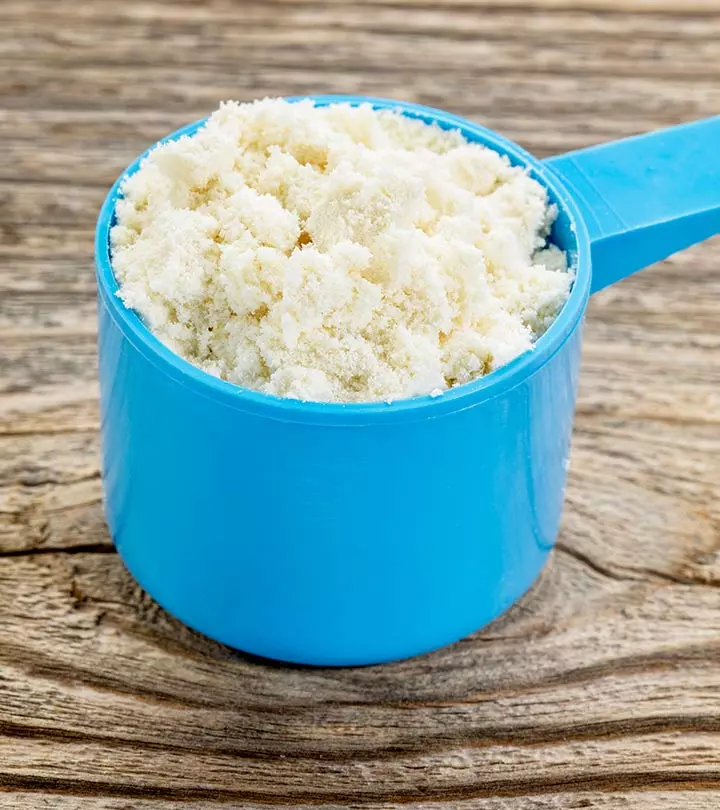
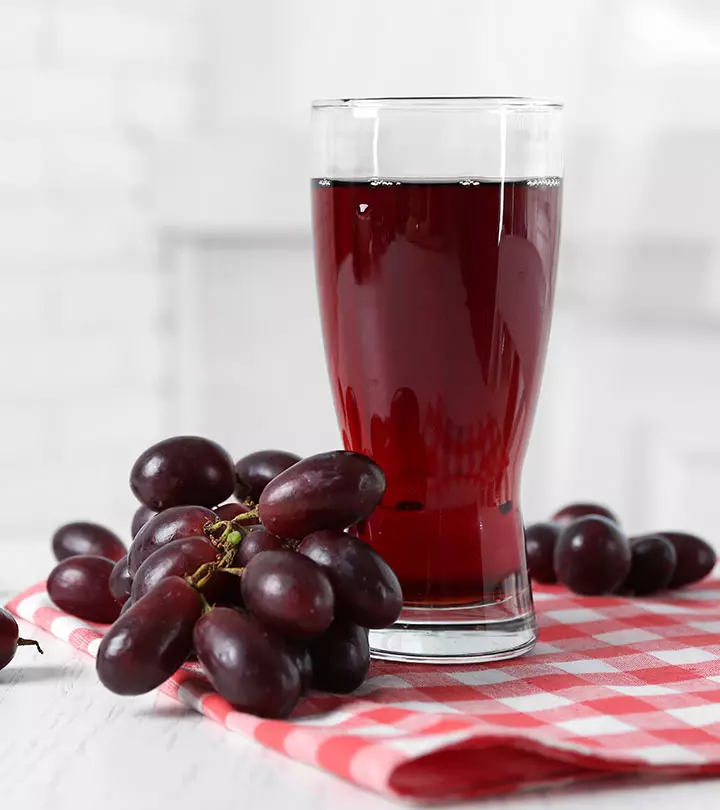
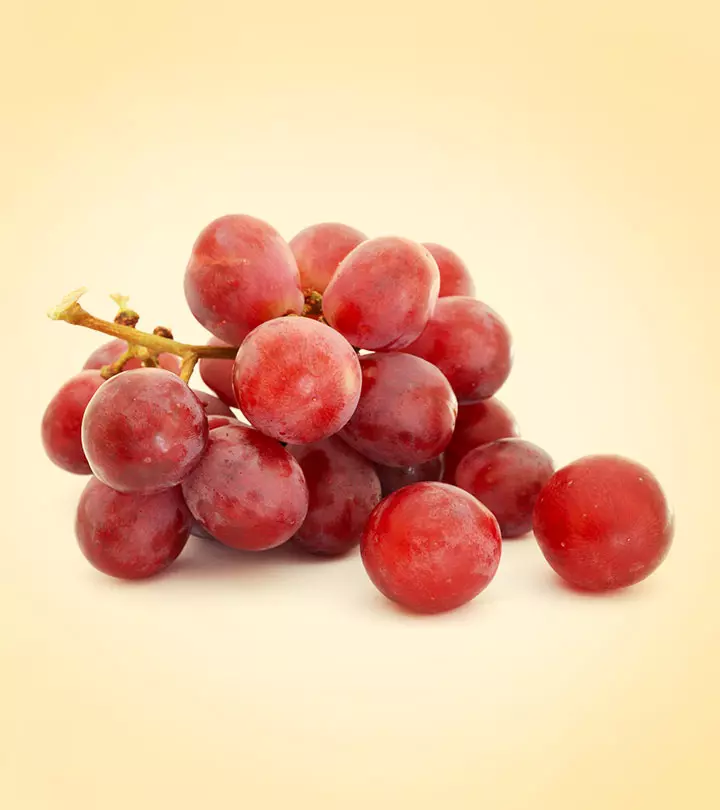
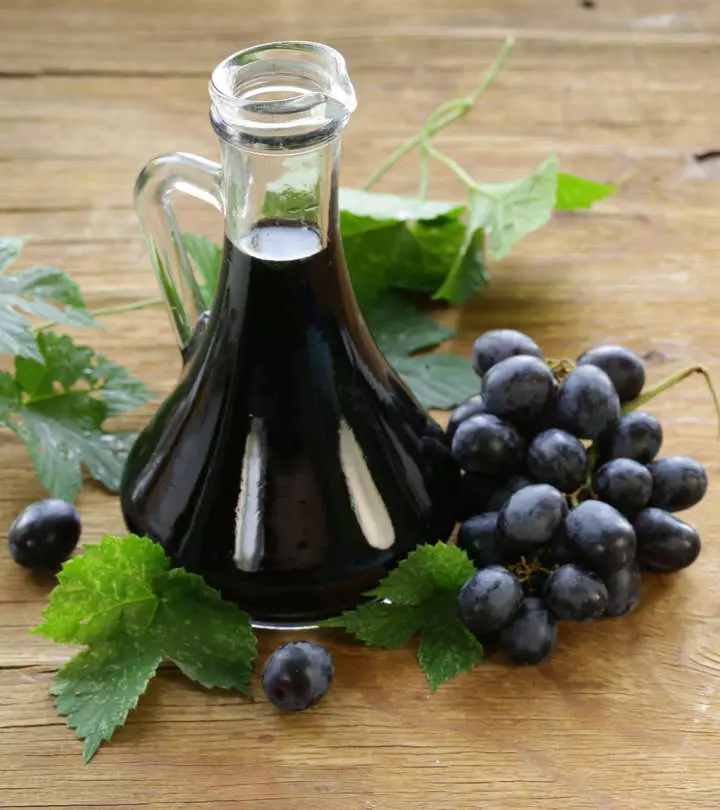

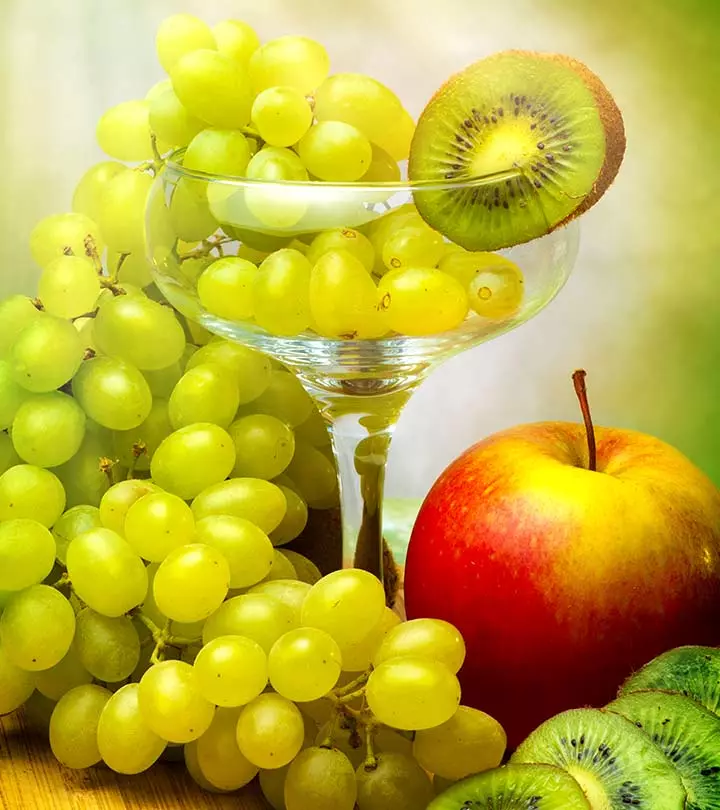
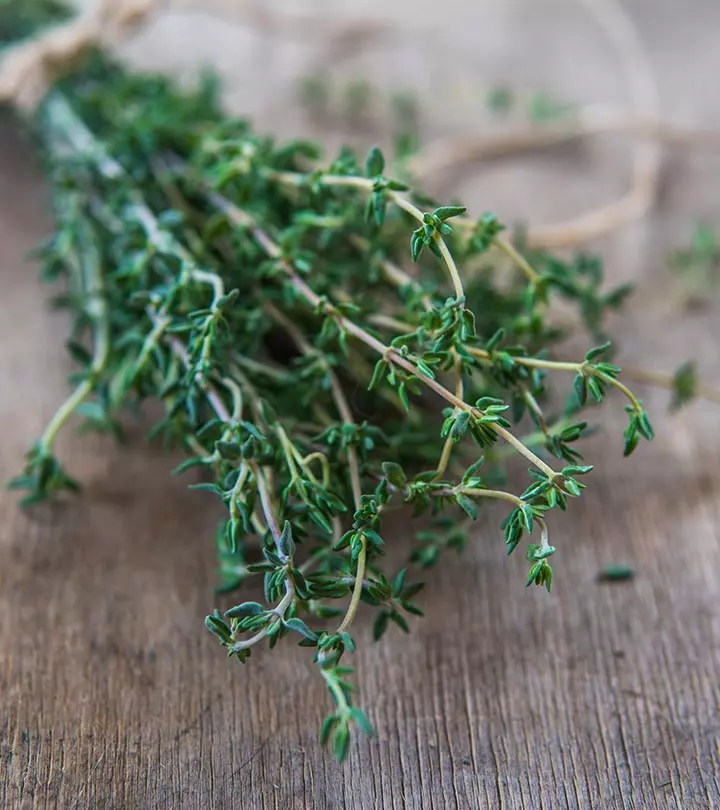
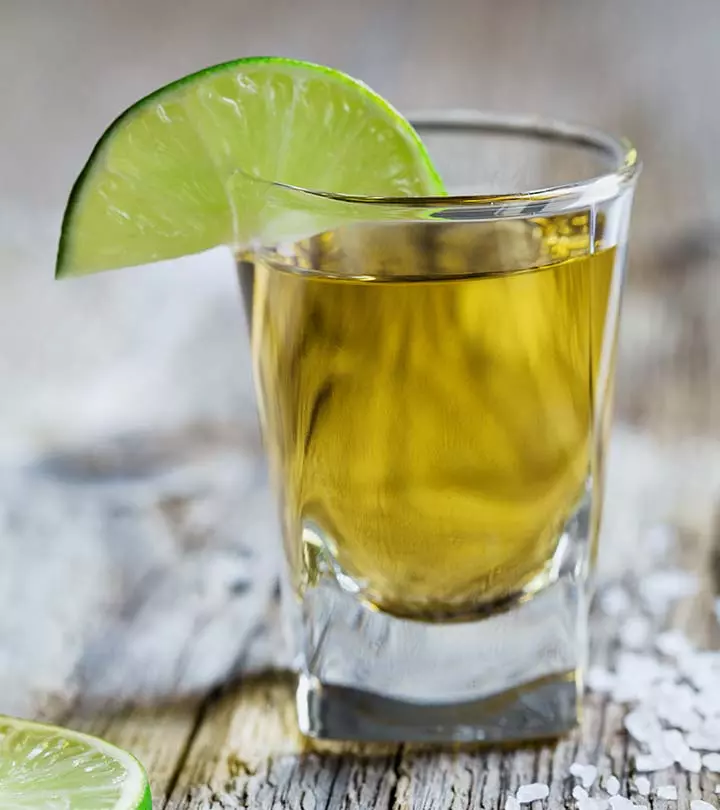

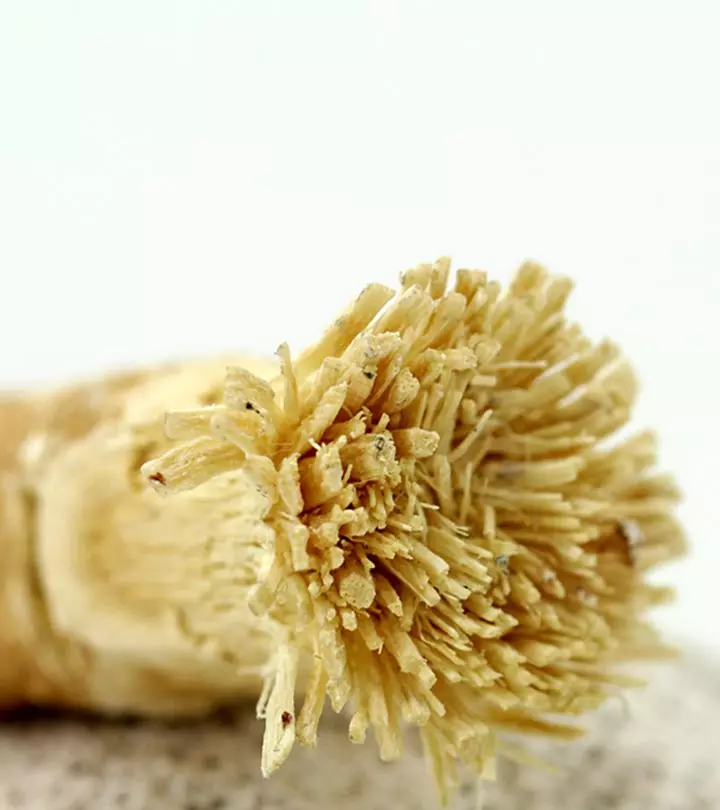
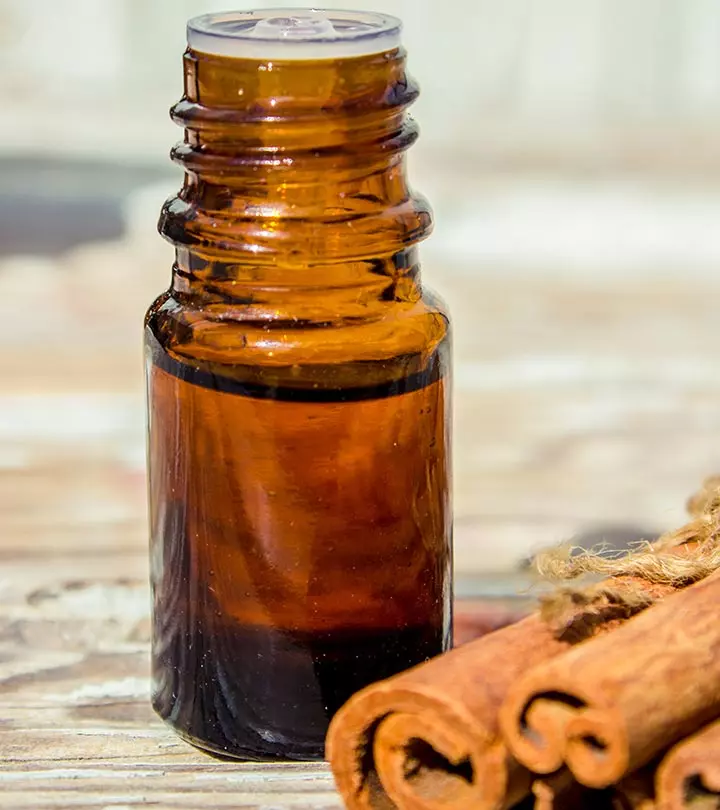
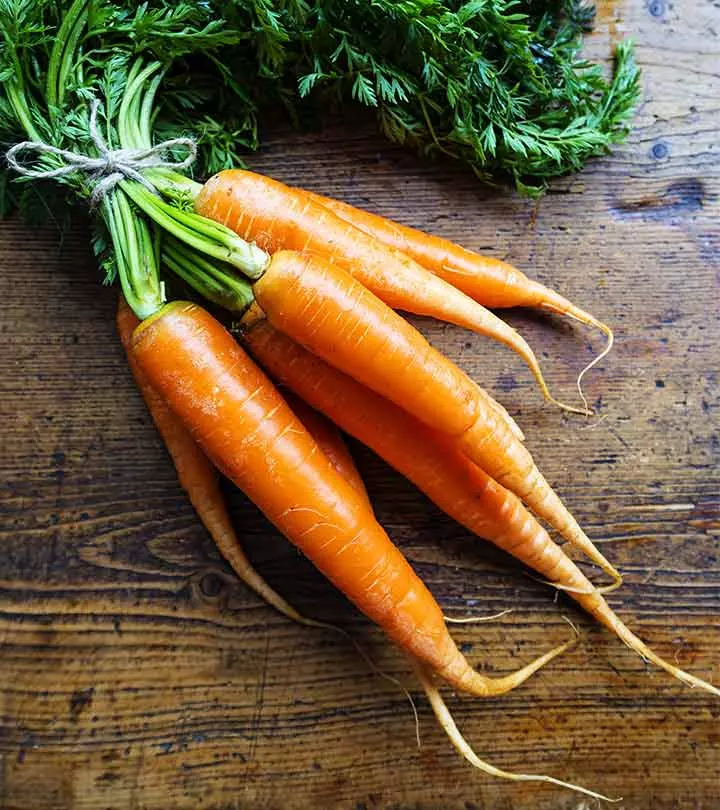
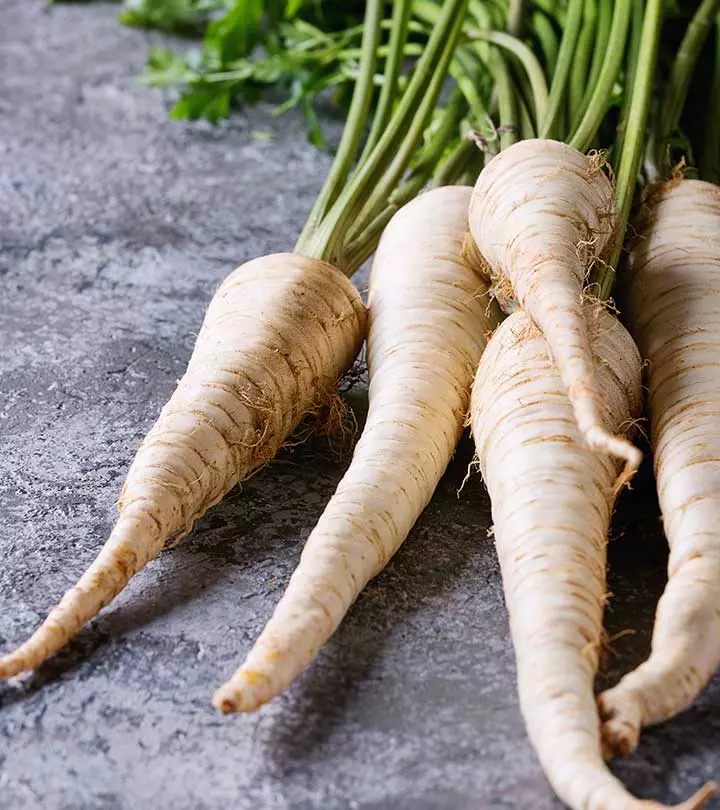
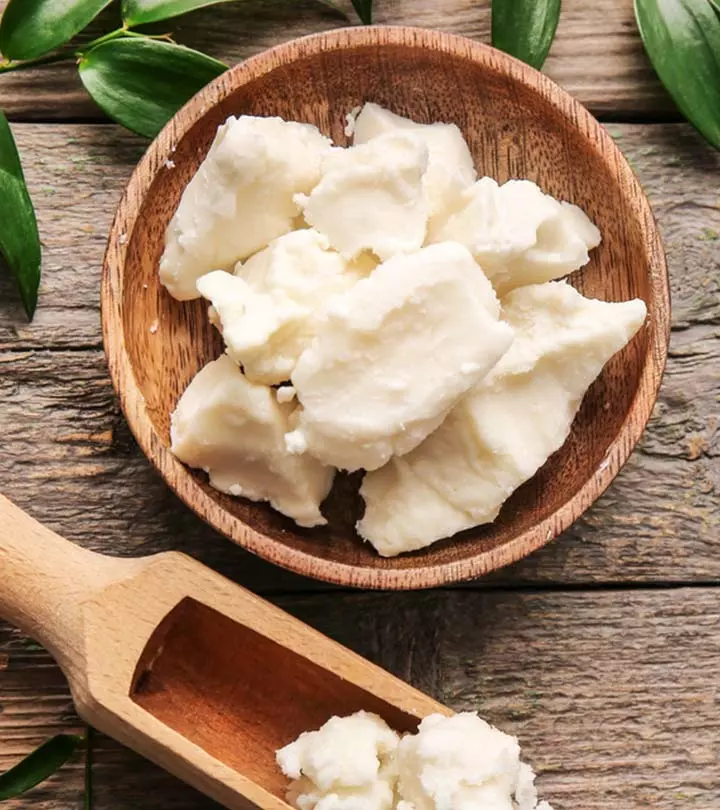
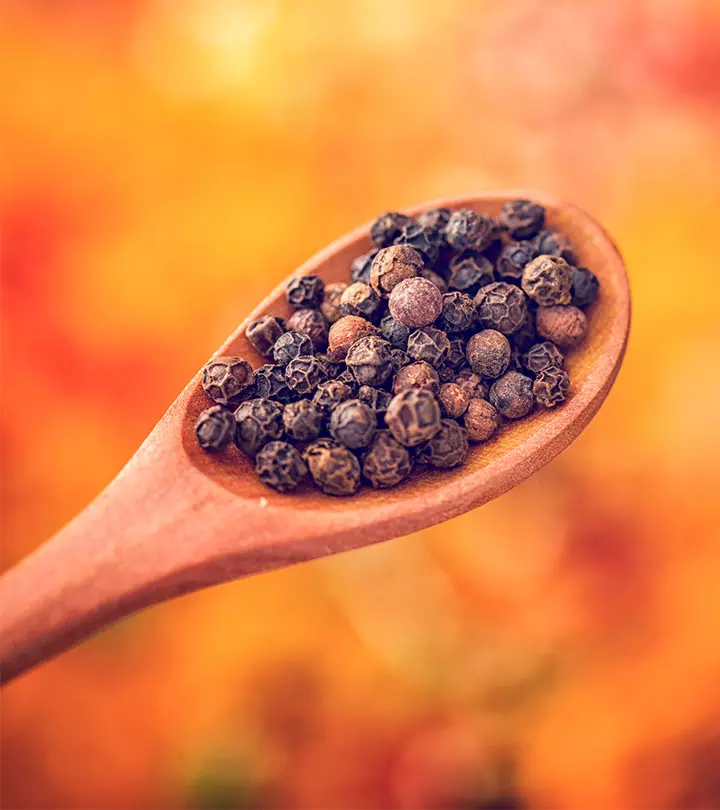
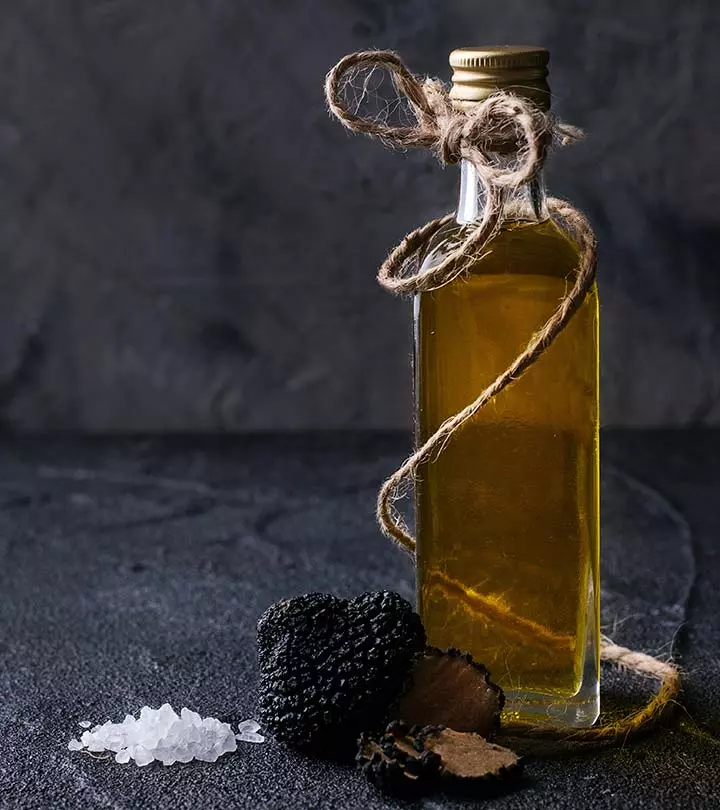

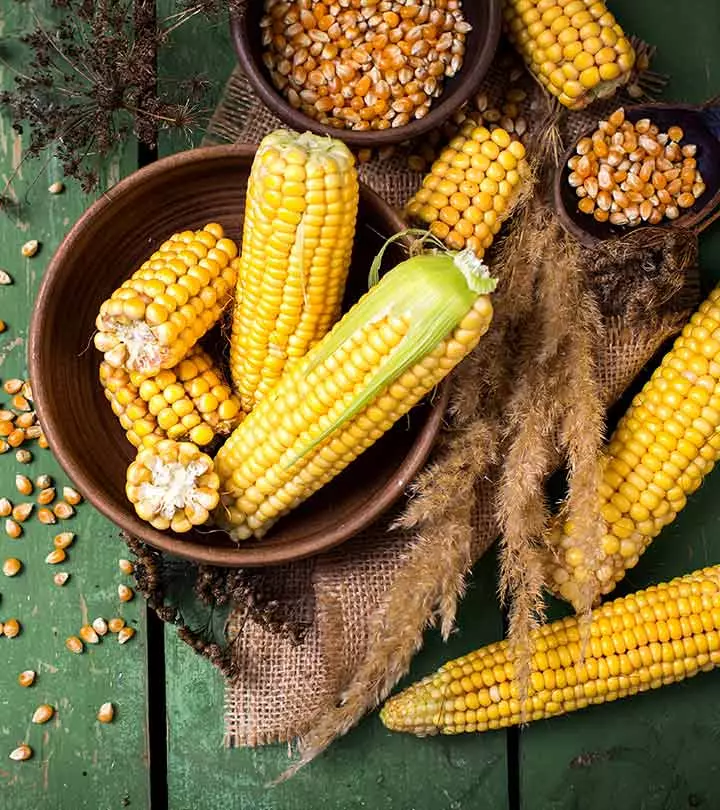
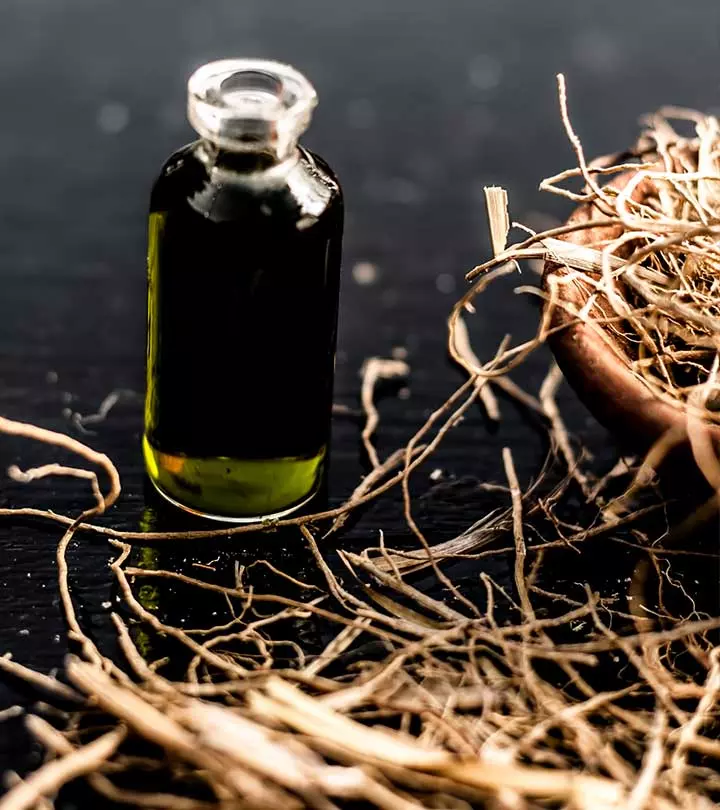
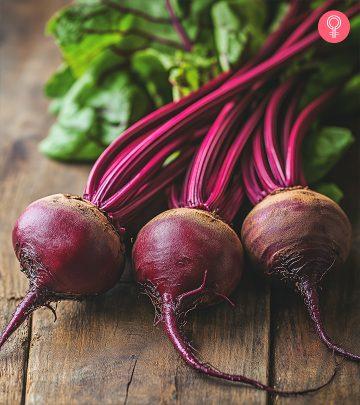
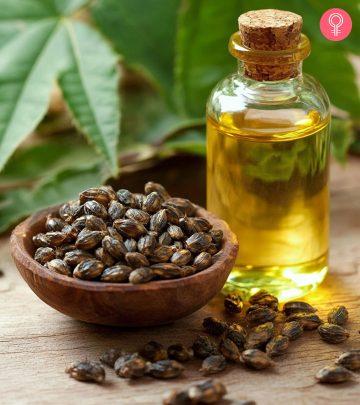
Community Experiences
Join the conversation and become a part of our empowering community! Share your stories, experiences, and insights to connect with other beauty, lifestyle, and health enthusiasts.